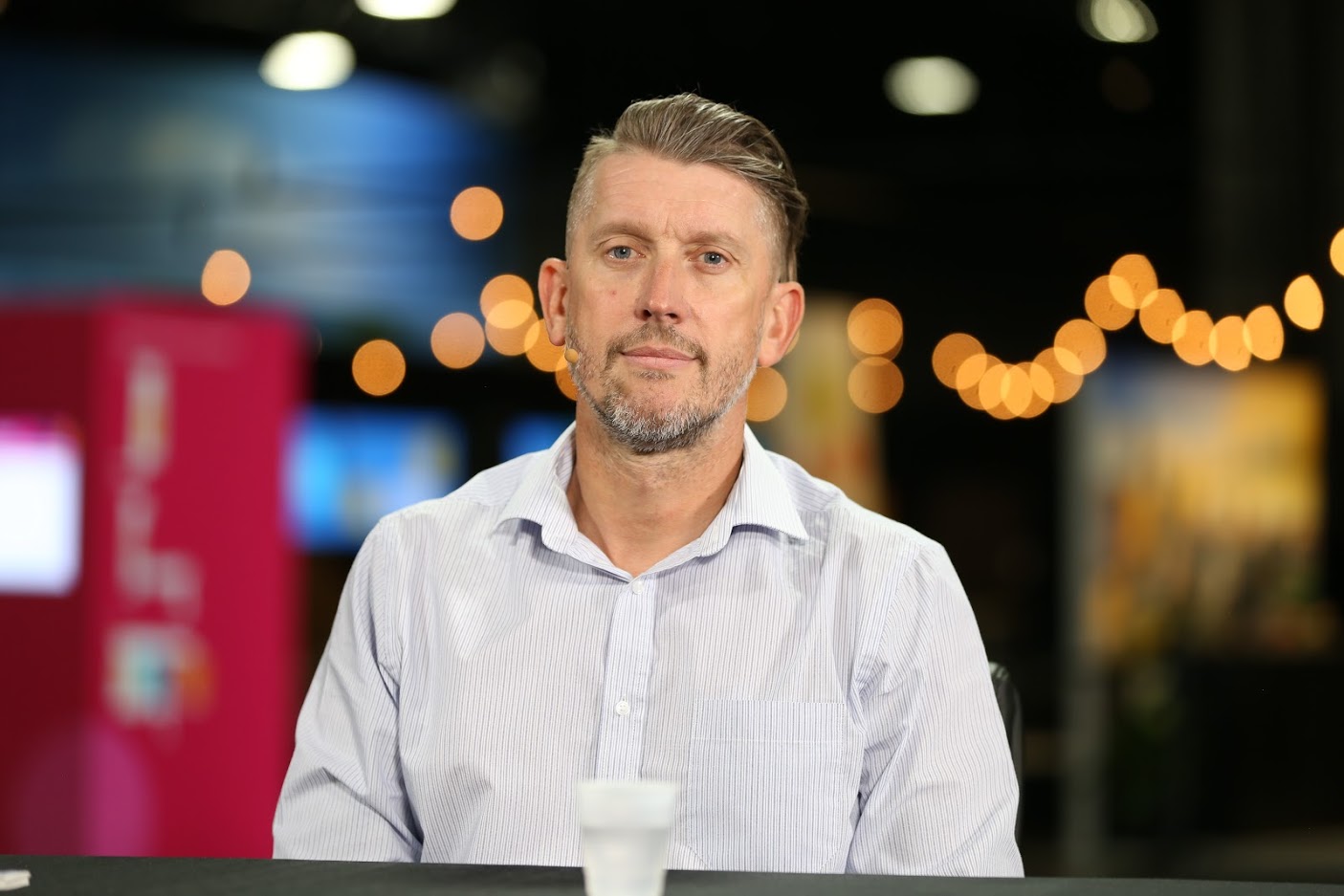 AI
AI
 AI
AI
 AI
AI
Citrix Systems Inc. is hoping to help users get back valuable work time with robotic process automation. Through thoughtful analytics, it seeks to gather and use data that will solve the problem of the everyday worker — the monotony of mundane tasks — by letting artificial intelligence take on the tedium. But the move won’t be without its challenges, including figuring out who takes the charge when automation goes wrong.
“Robotic process automation has skyrocketed again as organizations look to … free up the very scarce human capital to work on things that really matter,” said Christian Reilly (pictured), vice president and chief technology officer of Citrix.
Reilly spoke with Lisa Martin (@LisaMartinTV), co-host of theCUBE, SiliconANGLE Media’s mobile livestreaming studio, and guest host Keith Townsend (@CTOAdvisor) during the Citrix Synergy event in Atlanta, Georgia. They discussed how Citrix is helping users boost productivity with AI (see the full interview with transcript here). (* Disclosure below.)
[Editor’s note: The following answers have been condensed for clarity.]
Martin: Everybody is so excited about this obvious pivot that Citrix is making toward the general user: “I want my workday to be far more productive. I want apps and actions brought to me so I can actually get down to the business of what I was hired to do.” And we also are hearing over and over again how employee experience is now elevated to a C-suite imperative — that is so critical because it directly affects the customer experience.
Reilly: It’s great to watch it all come to life, because we’ve been working on this for a number of years behind the scenes. We’ve been very calculated about the approach here. We do a lot of research in trying to understand these problems and these challenges.
Customers are looking for more innovation from Citrix, looking for better ways to work, and I think we’ve got a very privileged position in being so important in customer application delivery over the decades that Citrix has been around. So the move, even though it seems like it’s a quantum leap, is actually a really natural thing for us to go do, because we’ve won the trust over three decades of being the vendor to deliver mission-critical apps. So this is just an extension of that.
Townsend: What’s the foundational capability that you’re giving businesses today, that we’re going to look back 20 years from now and say, “Obviously, that was the innovation”?
Reilly: I wouldn’t say that analytics is the only thing, but certainly when you think about the way we lined up the analytics conversation around security performance and then productivity. That’s the foundational element. And we’re going to look back at that in a few years’ time and realize that we were very privileged to be in the path of user transactions, and the more you’re in the path, the more transactions you get. The more transactions you get, the more source data you get. The more source data you get, the more you can feed the machine-learning model and nd the more accurate you can be about delivering the context of the workspace. So I think that’s super important.
The next bit, of course, would be the acquisition that we made of the Sapho technology back in November of 2018. I think what you see there is that big shift from the version one of the Workspace, which was still very much about the traditional applications, traditional desktops, and then bringing together web and SaaS applications. We always knew that there was a bigger play, which was how do we take work and break it down into atomic units?
We don’t think about just the application; we think about the why. Why do people use applications? What is it that they do? And if you think about how that plays out with analytics, the more intelligence that we gather, the more intelligent we make the Workspace. So I think with a couple of things, we’ll look back at the Sapho acquisition as a key technology piece, but we’ll look back at analytics as the thing that helped to be the flywheel to deliver that intelligence within the Workspace environment itself.
Townsend: How tied to your existing set of products is this capability? Is this something from a total addressable market, whether it’s a mobile app or mobile-first app, that you guys can ingest this type of capability into?
Reilly: The real ultimate goal is to think about the Workspace overall as more of an experience that will evolve. It’s not necessarily an app; an app is one way to consume it, but we want to build a platform that can consume and be consumed by other things. The value of that from a choice perspective is that we don’t demand what the customers use.
I think when we get a little bit further along in the thinking on the platform itself, it opens up endless possibilities to interact with the information you need. And it’s not predicated upon any operating system because, hopefully, we can be ubiquitous.
Watch the complete video interview below, and be sure to check out more of SiliconANGLE’s and theCUBE’s coverage of the Citrix Synergy event. (* Disclosure: TheCUBE is a paid media partner for Citrix Synergy 2019. Neither Citrix Systems Inc., the sponsor for theCUBE’s event coverage, nor other sponsors have editorial control over content on theCUBE or SiliconANGLE.)
THANK YOU